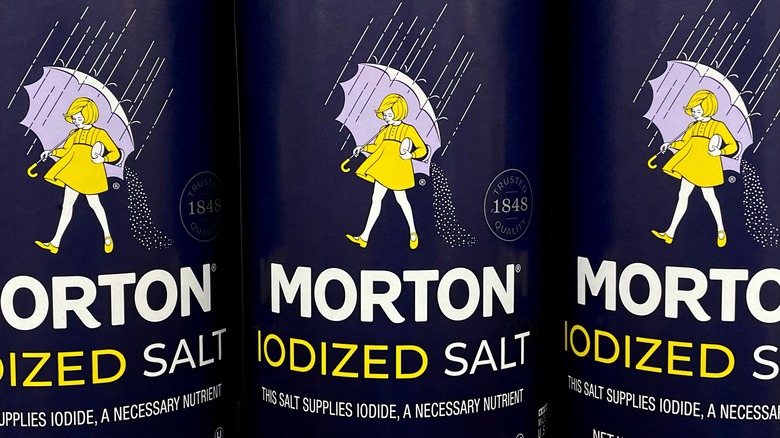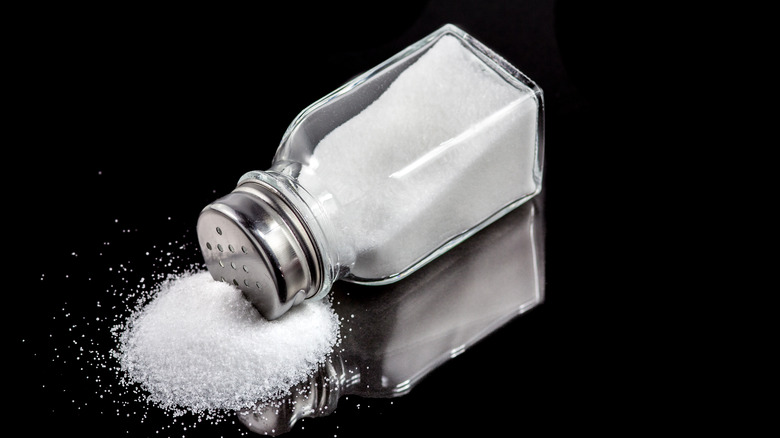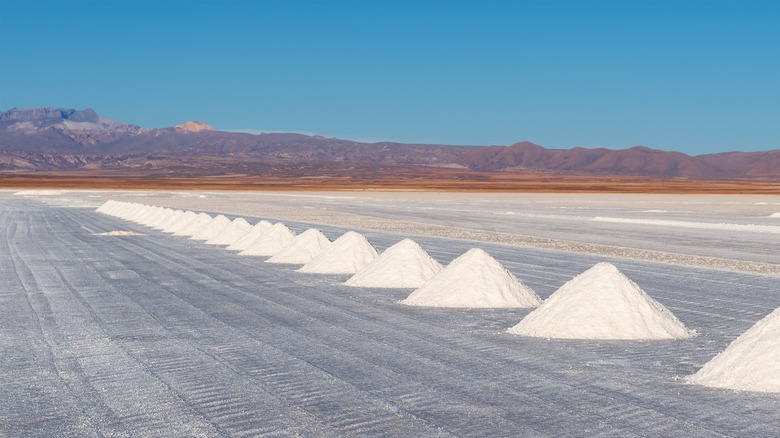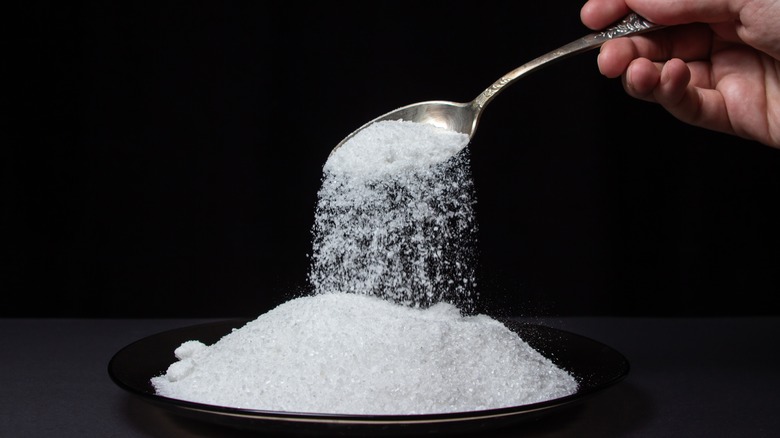Unrefined Vs. Refined Salt: Is There A Nutritional Difference?
When beginning to salt your food like a chef, one of the first things you may reach for is the salt shaker on the kitchen table. While the ingredient has been much maligned over the years, it's actually a necessary mineral, responsible for maintaining fluid balance and keeping our nerve cells firing, per Harvard Health Publishing. Salt enthusiast and self-proclaimed selmelier Mark Bitterman, author of the book "Salted," believes that salt is the nectar of the gods, enhancing the flavor of foods both savory and sweet; its crystals imparting their unique flavor depending on where they were harvested (via The Kitchn).
All salt comes from seawater but some come from underground deposits left a millennia ago while others are collected directly from the ocean by evaporating the ocean water (via MasterClass). However, there are different types and you may wonder what distinguishes each of them from the others. Aside from the different brands, varieties, and options at the grocery store, salt can be sorted into two categories: refined and unrefined. But what exactly is the difference between them and how does that affect nutritional value?
Minerals are removed from refined salt
When you think of regular table salt that you keep ready to add a bit of flavor to your food, you're likely thinking of refined salt. Refined salt is excavated from underground, but it then goes through a refining process to remove any of the additional minerals that may have collected. Vail Daily explains refined salt relies on sulfuric acid and chlorine to remove these extra minerals. Removing the minerals gives refined salt its pure white color, which is considered more palatable. Anti-caking agents are also added to keep the tiny crystals from clumping.
One type that is readily available and cost-effective, and therefore widely used, is kosher salt. While salt expert Mark Bitterman said it's "effective in imparting saltiness to food, but it's not a particularly natural way to do so," this refined sea salt can be counted on to add consistent flavor time and again (via Bon Appétit).
What makes salt unrefined?
Unrefined salt, on the other hand, is considered to be natural salt that does not have its natural minerals removed. Himalayan salt, Real Salt, and Celtic sea salt, each of which has a different origin, are examples of unrefined salt (via MasterClass). Celtic sea salt involves evaporating seawater to extract its natural salt. Light grey in color from the natural clay in the mud from the salt flats where it's collected, Celtic sea salt is hand-harvested. The Spice Guide explains sea water floods the salt basins and is trapped, where it's allowed to evaporate under the sun. The salt is then raked out using wooden rakes (via Love Sea Salt).
By contrast, Himalayan salt and Real Salt come from deep-shaft salt mines located below the Earth's surface. NPR explains that some Himalayan sea salt, which is pink from trace amounts of iron oxide, is mined from a salt deposit in Khewra, Pakistan. The salt is the remnant of a lagoon that filled the area 600 million years ago. Real Salt, which comes from Redmond, Utah, is all that remains of the Sundance Sea, an inland sea that once covered the area (via Redmond).
According to MasterClass, this type of salt also does not have any added preservatives and typically maintains nuanced flavors besides a pure salt taste. The texture also tends to be coarse, although it can be ground to achieve a finer grain.
The nutritional difference between refined and unrefined salt
While the Mayo Clinic says there is no discernible nutritional difference between refined table salt and unrefined sea salt, SF Gate explains unrefined salt retains minerals like magnesium, sulfur, potassium, calcium, and bromine as well as other trace elements. However, iodine, which is necessary for thyroid function, is sometimes added to refined salt (via Scientific American). While it's found in food items like saltwater fish, eggs, and cheese, it was added to table salt as well to combat iodine deficiency.
Given that the nutritional differences are negligible, use of either salt comes down to preference. The world of unrefined, artisanal salt is expansive, and "Salted" author Mark Bittman is its evangelist. As he explains to Modern Adventure, "The flavor of the salt itself is not what matters. Nobody eats salt by itself. What matters is the interaction of the salt and the food." Given this, unrefined salt's advantage is its flakey texture and myriad of flavor profiles, including infusing flavors that enhance a variety of foods in unique ways. You could try this while making a sea salt recipe.



